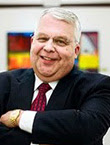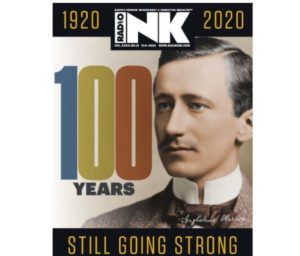
(By Randy Michaels) When considering the future, it’s important to start with the past. So let’s begin by realizing that radio is not turning 100 this year. KDKA didn’t broadcast election returns on November 2, 1920. Its predecessor, 8ZZ, did. The recording of the “KDKA” broadcast is a recreation. The myth that KDKA was the first radio station was invented by the Westinghouse publicity department years later.
8ZZ was one of many stations organized by the Amateur Radio Relay League to
broadcast the returns of 1920, relaying results across the country to each other and the
public. The predecessor to WGR/Buffalo, as well as WMH/Cincinnati (later acquired by
WLW) and WWJ were among the many stations airing results that day along with 8ZZ.
KDKA’s commercial license wasn’t granted for broadcasting, but rather for
communication with Westinghouse’s factories in Cleveland, Springfield, and Newark.
Donna Halper and others have written more on this subject.
A History Of Reinvention
Radio has reinvented itself constantly, since before 8ZZ or KDKA were born. Wireless
telegraphy, using radio waves and Morse Code, began in the late 18th century. Reginald
Fessenden broadcast music from a spark transmitter to ships at sea in 1906. Doc Herrold
was broadcasting in San Jose by 1909 and had a regular schedule of music on the air by
1912. The forerunner of WWJ/Detroit was broadcasting a schedule of news and
WMH/Cincinnati was airing a Wednesday-night concert using records from a local store
before Westinghouse started broadcasting. And even in Pittsburgh, KQV is the
descendant of 8EN, which predates both 8ZZ and KDKA.
The U.S. considered radio a key factor in winning World War I, and all non-military
radio was suspended during the war. When the war ended, the Radio Corporation of
America was formed as a patent trust to hold the Marconi patents, by then considered a
powerful military asset. The purchase of radio equipment or even radio parts required
payment of a royalty to the trust. That meant radio in the 1920s was mostly an expensive
hobby.
Early broadcasters were often trying to promote something — department stores,
insurance companies, newspapers, and radio manufacturers were among the earliest to
get on the air. NBC was started so people would buy radios and parent RCA could collect
royalties on its radio patents.
The Great Depression of the 1930s saw radio become a primary medium for
entertainment and information in the home, and desire for the latest news on World War
II drove radio’s adoption in the ’40s. Some of the larger stations had hundreds of
people on staff. Music was live. Writers, directors, sound effects men, even theater ushers
were on the payroll.
Television replaced radio as primetime in-home evening entertainment in the ’50s.
Musicians were mostly gone, replaced by DJs playing records. The only sound effect
might be a DJ slapping the phone book or ringing a cowbell.
The invention of the transistor gave new life to radio as a personal, portable medium as
“format,” PD-driven radio dominated the ’60s. The ’70s and ’80s saw the development of
FM as the dominant transmission method, while spoken word and niche formats gave
AM a longer tail.
The ’90s and early 21st century have seen consolidation, staff reductions, and increased
national and regional control. Digital platforms meant to complement broadcast
transmissions are almost ubiquitous, although perhaps not yet profitable.
Radio has constantly found new ways to attract an audience and new audiences to attract,
and radio has constantly reinvented the way it is monetized. Early network shows had
four sponsors, one per quarter-hour. Through the 1950s, most advertising on radio was
national. Small stations made budget on Main Street.
New Challenges, Missed Opportunities
Radio now is experiencing its most challenging period so far. The way people get
information and entertainment has been evolving for some time, and the pace of that
evolution has been accelerated by our reaction to COVID-19. During the shutdown, in car listening plummeted, and many listeners learned to use smart speakers, phones, and
other devices for audio entertainment, making broadcast transmitters less valuable.
The balance sheets of most major broadcasters were not set up to handle the revenue
losses caused by the pandemic, and short-term, balance-sheet-driven decisions are
causing damage. Radio has missed much of the opportunity to bond with the audience
created by COVID-19 and other events because advocates with authority to respond
immediately, and the staffing required to execute, have largely been eliminated. Times
like these show the limitations of centralization and voice tracking.
The so-called “new normal” has winners and losers. The winners include Jeff Bezos and
Alphabet. The losers include many of the small businesses that use and benefit from
radio.
No doubt radio will continue to reinvent itself as it always has, but how it will evolve is
unknowable. Logically, radio can create content as well as or better than anyone. Will it?
We can say “audio is audio” so distribution doesn’t matter, but that is misleading. The
limit on the number of frequencies available for broadcast in an area allows some stations
to maintain their high profit margins. As distribution moves to digital, the number of
channels is practically unlimited, and the barrier to entry caused by scarcity of
frequencies is evaporating.
Other things — like data, network effects, or unique, desirable, difficult-to-duplicate
content — will be required to achieve meaningful margins. Many of us grew up with
three or four TV channels and a handful of stations, with only one or two targeting us.
We all watched and listened to the same things, in real time. But the days of one-to-many
experiences shared by most people are gone. TV added pictures to radio, and radio
responded by fragmenting and targeting demographics. Digital has added interactivity.
Today, targeting means targeting individuals, not demos.
The most successful companies will deliver content in whatever way makes the most
sense, given the content and consumer. Some events, like sports, breaking news, and real-time discussions of breaking news will continue to be live, but today’s consumer isn’t
content to wait for what they want to come on. They want what they want when they
want it. Meanwhile, AI will to an increasing extent help consumers find content they
want but didn’t know they wanted.
Distributing content by the most logical method, and repurposing content across
distribution platforms, is part of our near future. John Malone has combined Pandora and
SiriusXM. He’s angling to add iHeart. That will be one to watch.
What Is Radio?
So just what is the question? My dictionary says radio is “the transmission and reception
of electromagnetic waves of radio frequency, especially those carrying sound messages.”
If the question is “Will there be the transmission and reception of electromagnetic waves
of radio frequency … carrying sound messages” in 100 years?” Then the answer is “almost
certainly.”
After all, cellular telephony, Bluetooth, WiFi, NFC, and other technologies are all radio.
But what about “Internet radio”? Internet radio and podcasts don’t actually use radio
unless WiFi or wireless Internet is involved. So do we need a new definition of radio? If
radio means delivering audio content to a consumer by any means, then that will be with
us for a long time.
Someday, the current experiments in quantum computing may yield devices that can
transmit data faster than light. But until then, radio will be the fastest way to send
entertainment, information, or other content.
So radio will likely be around in 100 years. It won’t look like what we know as broadcasting today — any more than what we call radio today resembles the broadcasts of 100 years ago.
Randy Michaels can be reached by e-mail at [email protected]
This column first appeared in Radio Ink’s special 100th Anniversary of Radio issue. To get a copy of that issue, which includes many more column’s like this one, GO HERE.





